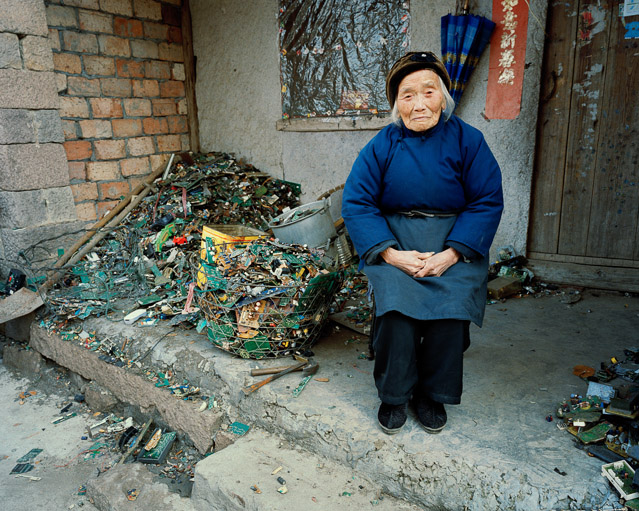
MANUFACTURED LANDSCAPES. The title—whether or not intended to be tongue-in-cheek—is laced with honest truth. Today, over 50% of the world’s population live in an urban context, making cities the single-largest aggregate landscape on our planet to be manufactured completely by humankind. And here, in these cities, is a complex narrative of consumption (demand) and production (supply).
The 2006 feature length film by Jennifer Baichwal documents photographer Edward Burtynsky in China as he navigates from one factory to another, capturing the unimaginable scale and rate by which the Chinese are producing goods for the world’s consumption. The opening image of the film is memorable for its artistic portrayal of an otherwise monotonous factory building, inside of which are endless rows of assembly lines where uniformed workers perform their tasks in an almost robotic fashion to fulfil their daily quotas.
The scene after the opening, which is adapted as the film’s poster image, illustrates the physical magnitude of such factories and the sheer mass of hired labourers required to complete the commodity supply chains. Stretching as far as the eyes can see, these factory compounds (which often include ancillary workers’ dormitories) dominate the horizon. It is a startling sight, and one that has been relatively hidden, that is, until revealed through Burtynsky’s photography.



While the film addresses specifically China’s manufactured landscapes from a production-side perspective, it also broadly tackles Burtynsky’s work related to the post-consumption aftermath of waste creation and e-recycling. Here, the film takes the audience on a journey to more remote parts of China where villages function in the most rudimentary way as e-waste recycling centres. Indeed, there is a burgeoning informal sector in these less advanced peri-urban and rural economies that are capitalizing on the end-of-life cycle of what has become (and continues to be) staggering mountains of e-waste. E-waste presents a buffet of toxic materials and the tedious process of separating the various components is a hazardous job which, sadly, becomes all the more high-risk in the informal sector.

In this respect, Baichwal’s film exposes the grim reality of mass consumption in a contemplative manner while Burtynsky’s dramatic photographs showcase the adverse impact of our consumption habits on the environment without being overtly political in so doing. Achieving these images, whether through motion film or still prints, required a certain level of access; and there were instances throughout the documentary that left me feeling unsettled, particularly the way in which some photos were ‘directed’. The DVD includes a bonus slideshow of Burtynsky’s works accompanied by his detailed commentary. This bonus feature is well-worth watching as it provides an in-depth understanding of Burtynsky’s creative process, including his explanations for photos that required a certain degree of intervention.
There are numerous portrayals of a 21st century industrializing China, in both mediums of film and photography, making it all the more challenging to introduce a fresh angle on a highly-reported subject. But with MANUFACTURED LANDSCAPES, Baichwal (to a limited extent) and Burtynsky (to a larger extent) have achieved just that—bringing to the surface the unforeseen picturesque qualities of a dull artificial landscape in order to tell an arresting story of one nation’s economic drive towards competitiveness and an equally alarming story of humankind’s precarious role in transforming places on a global scale.